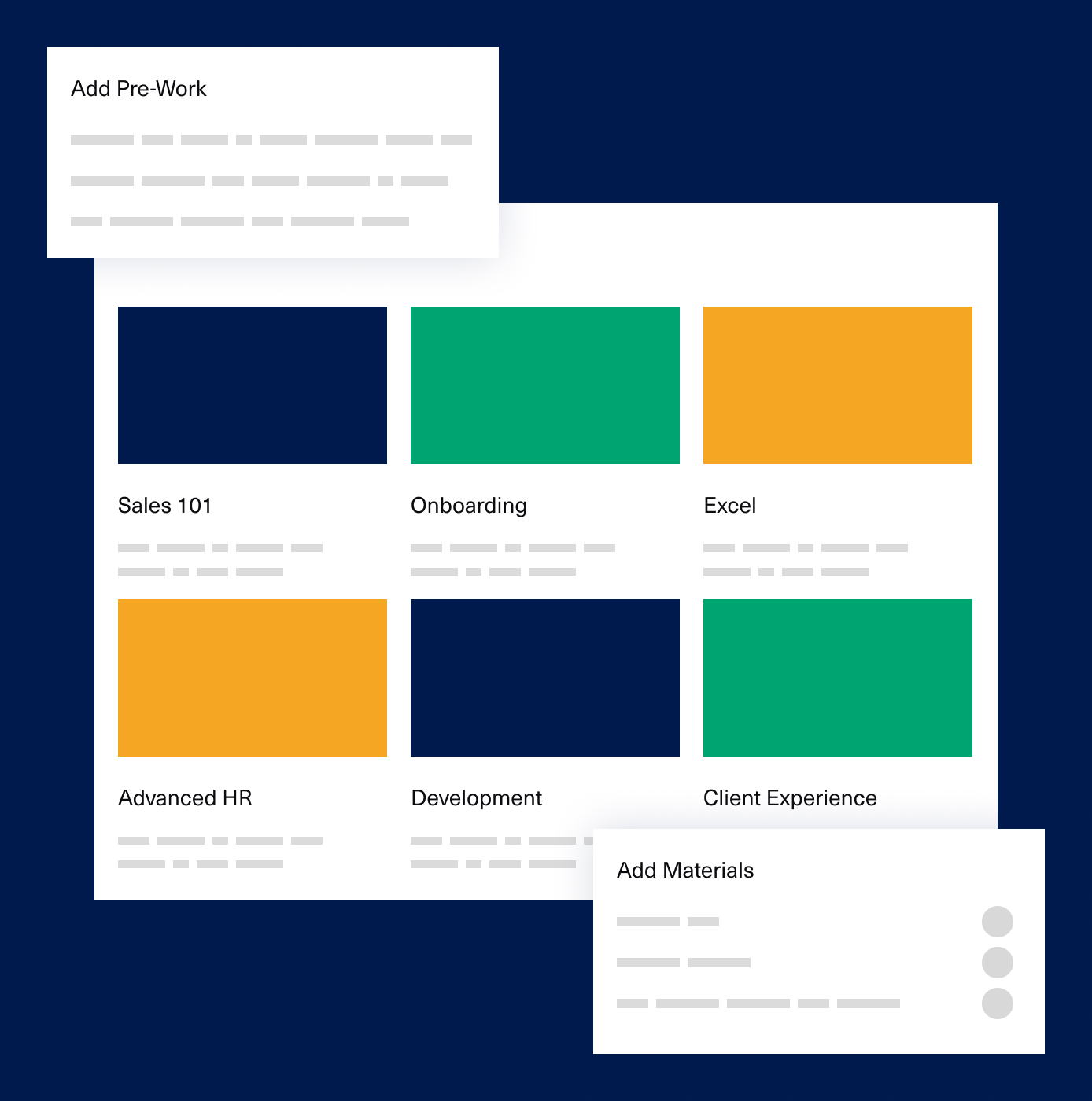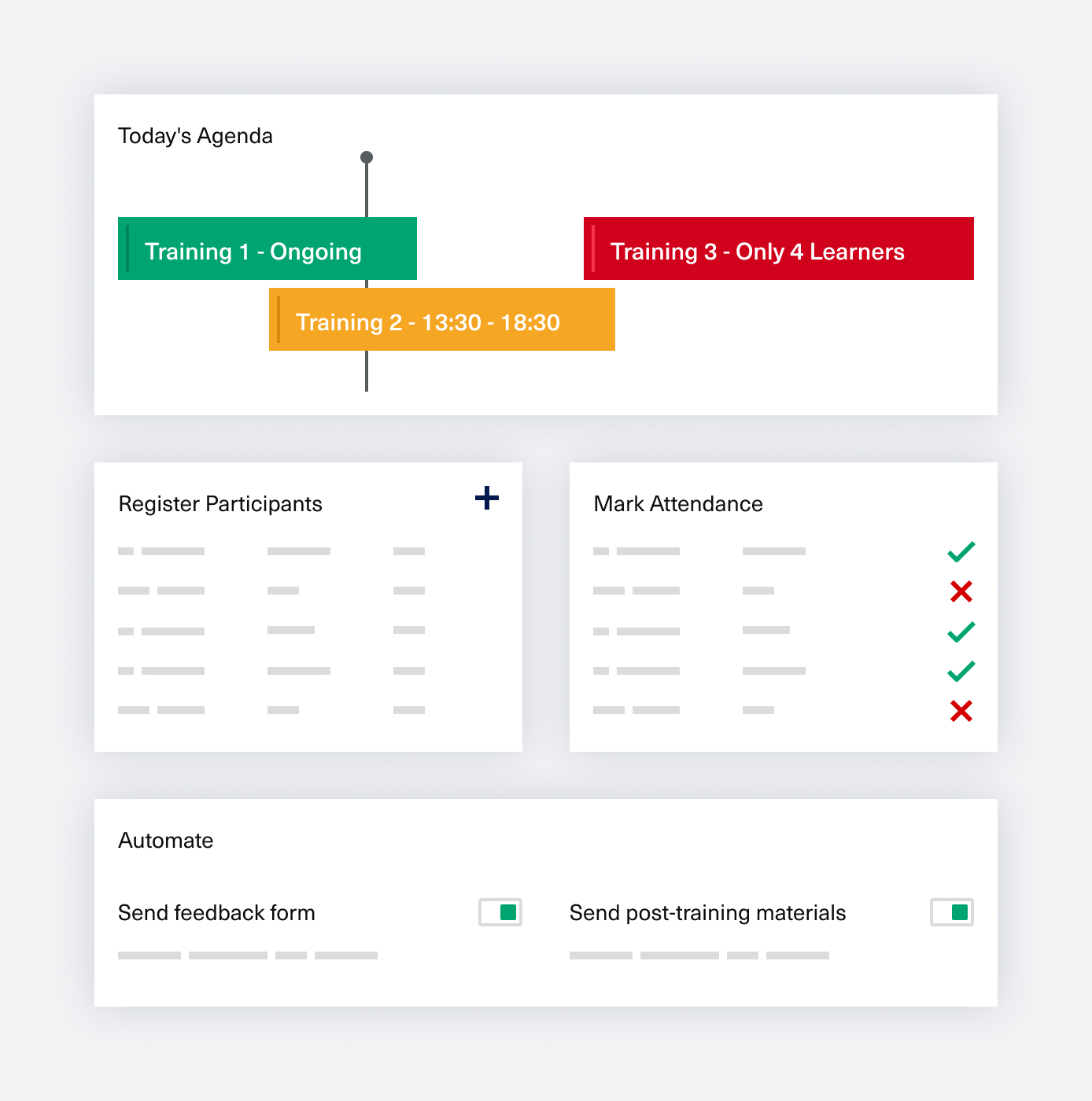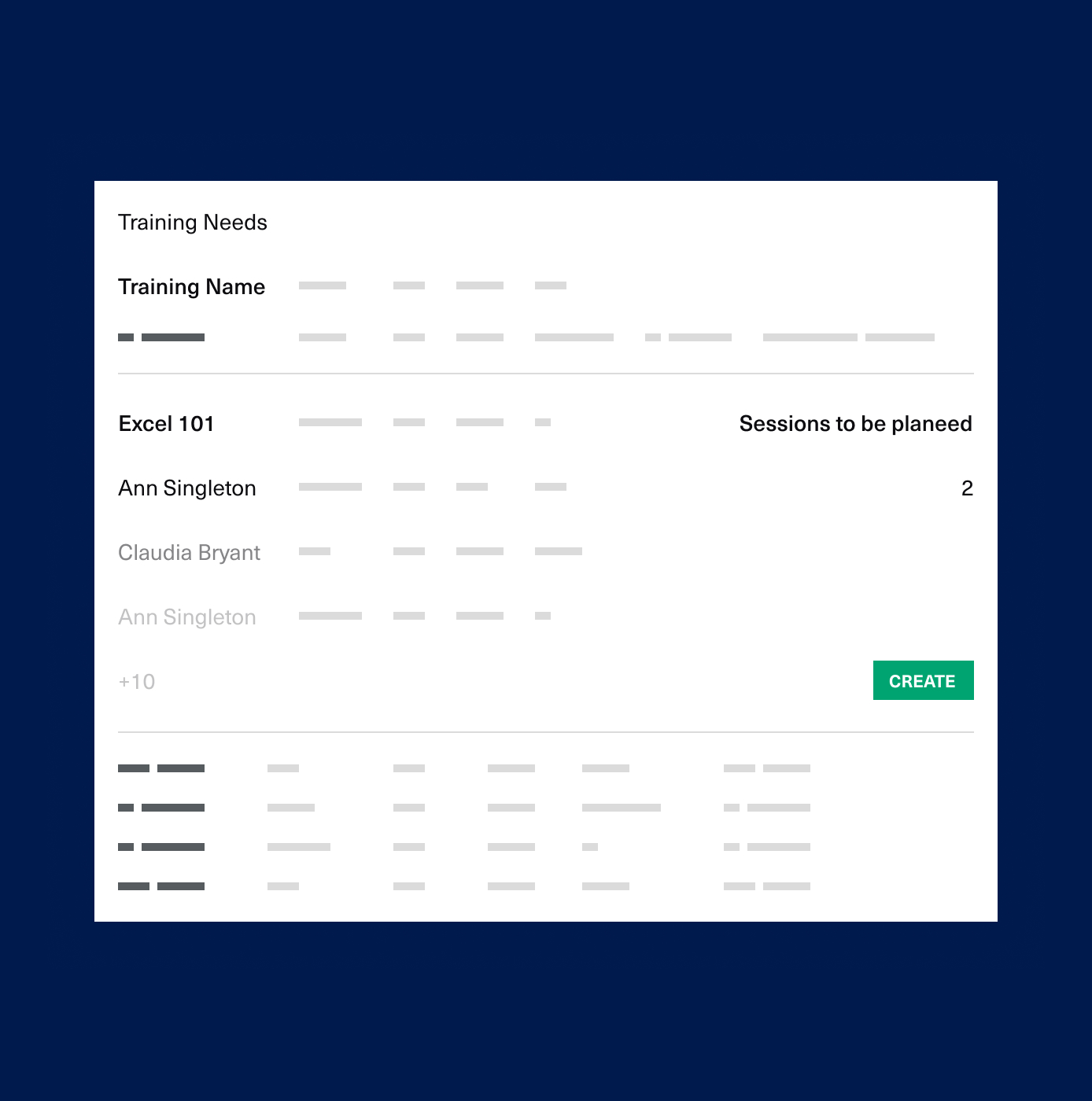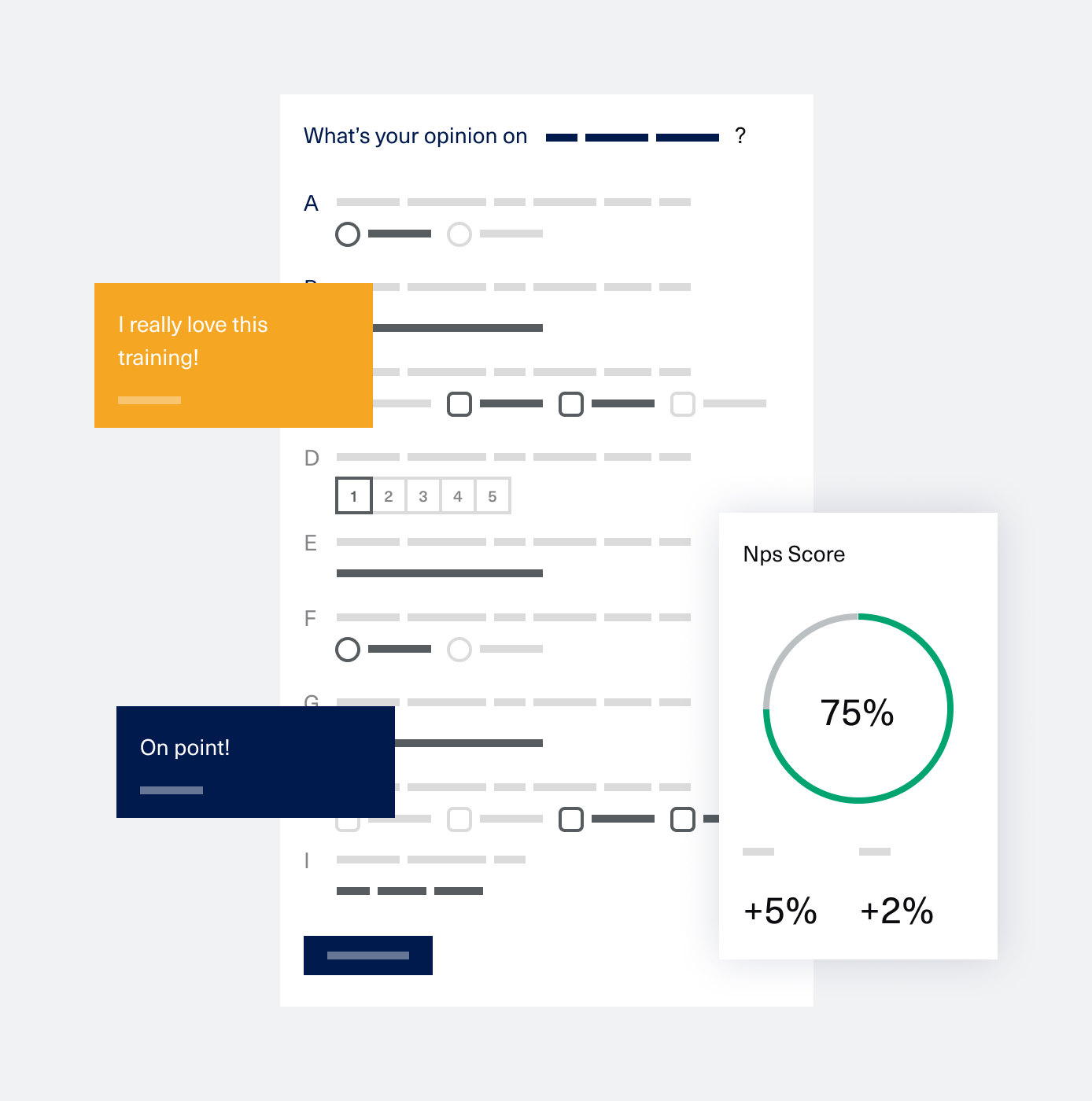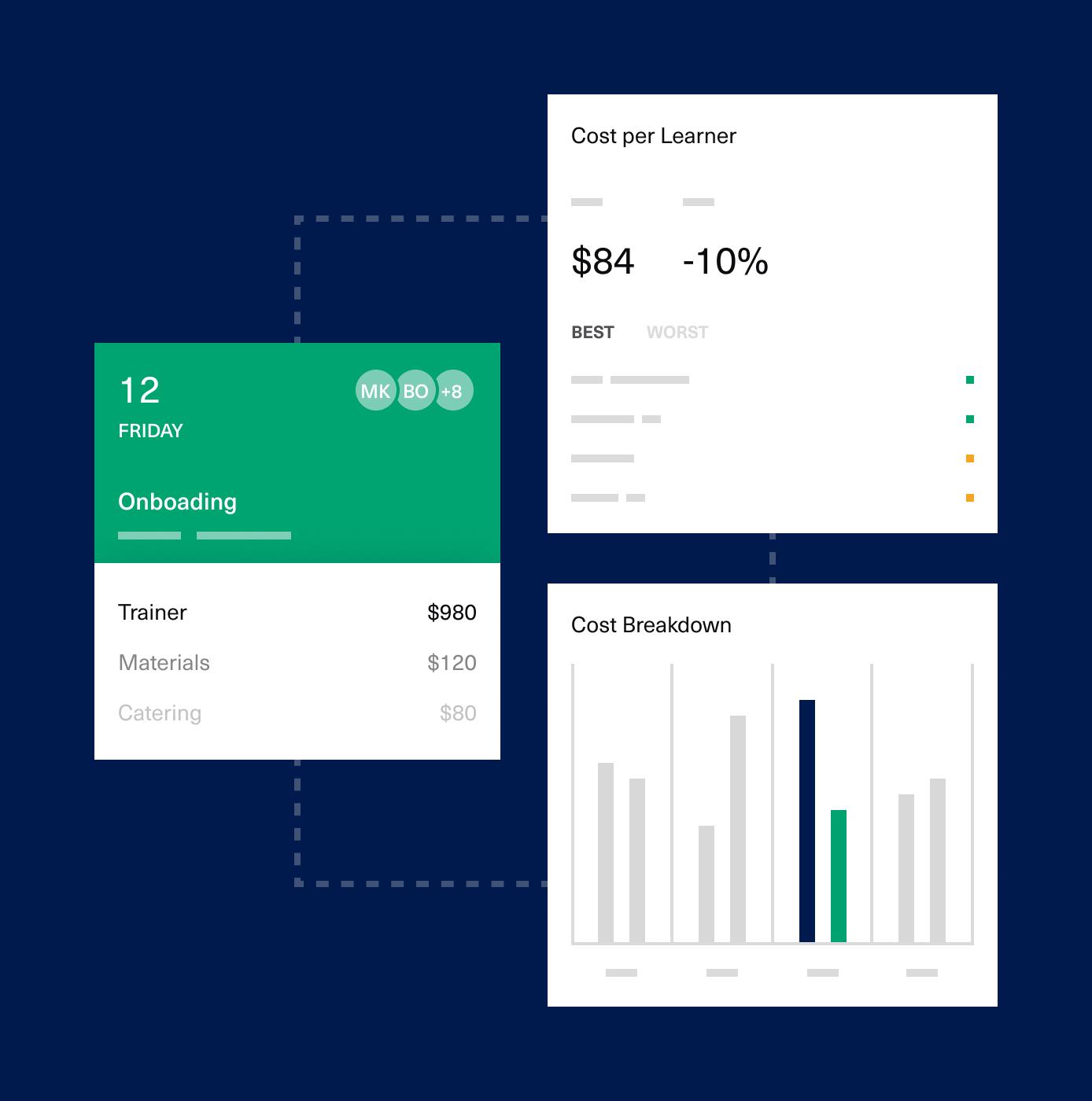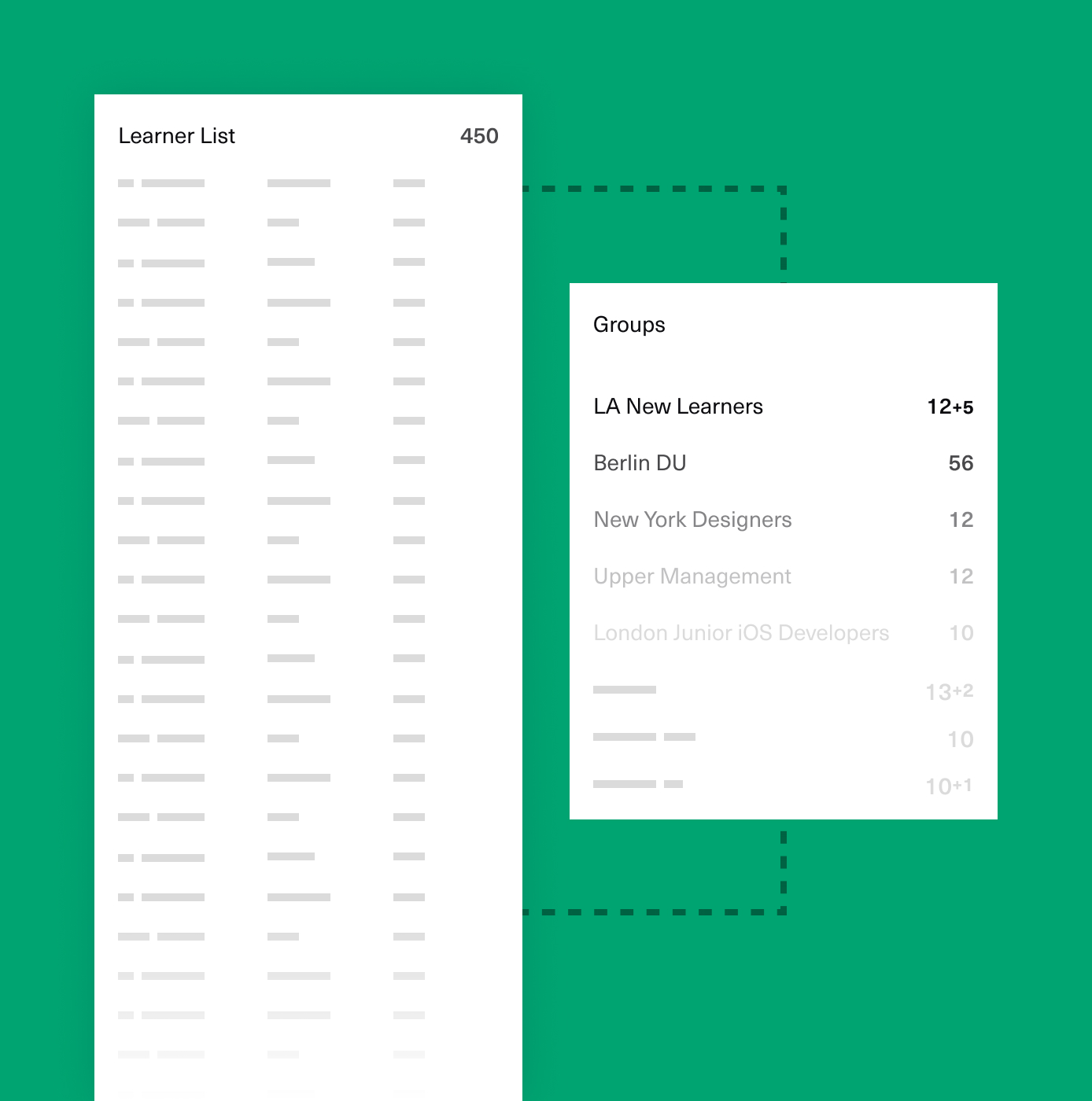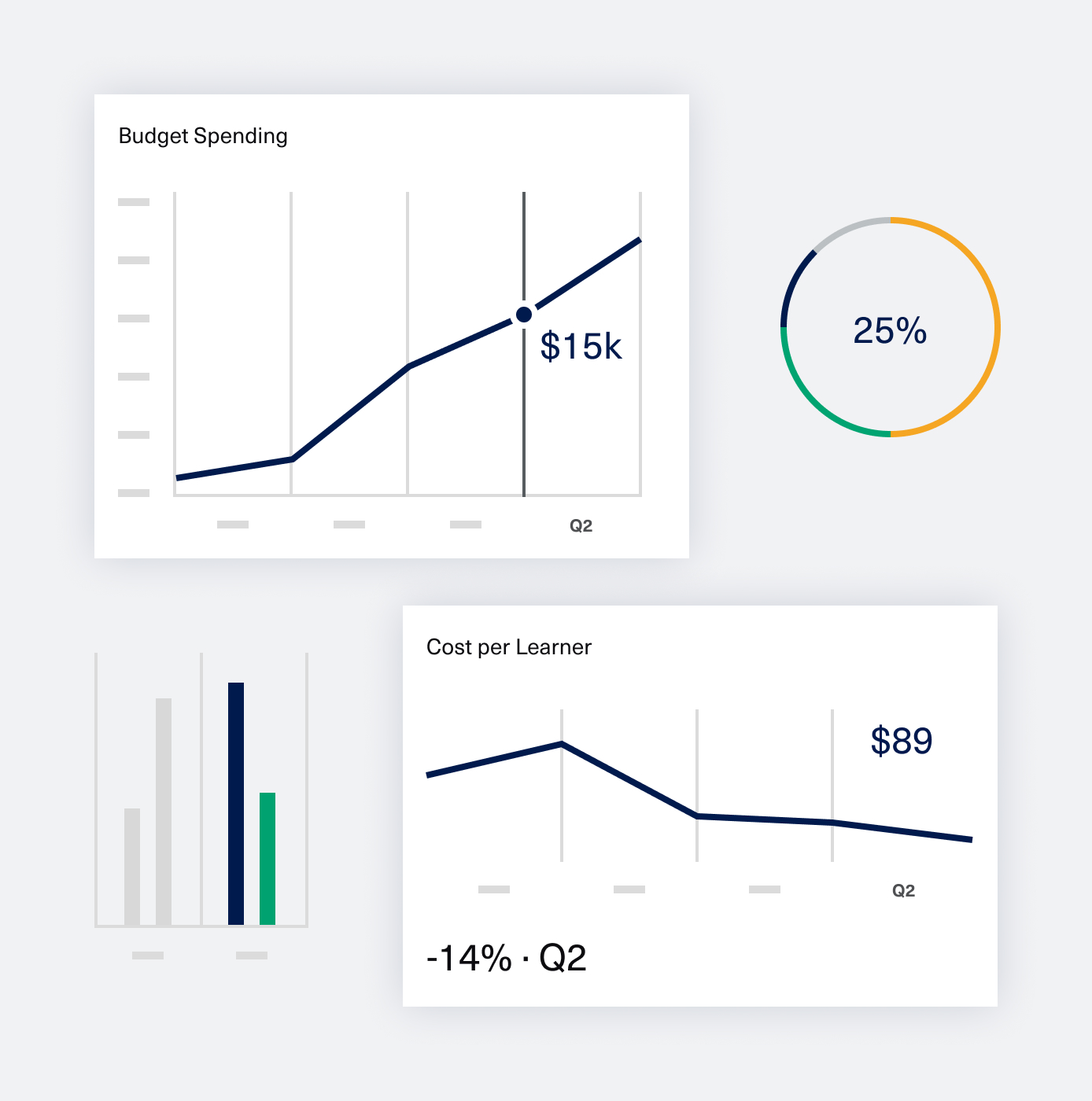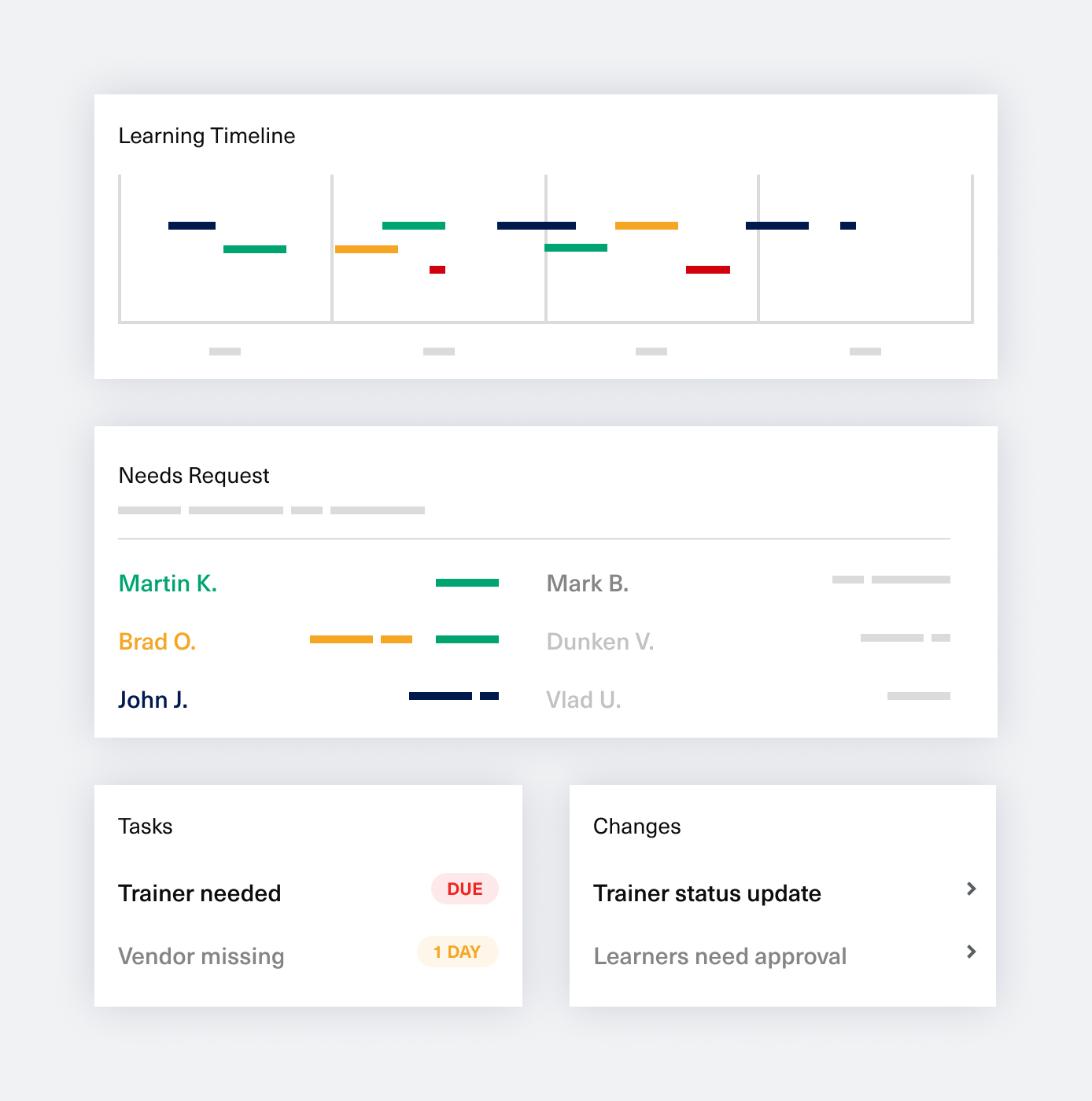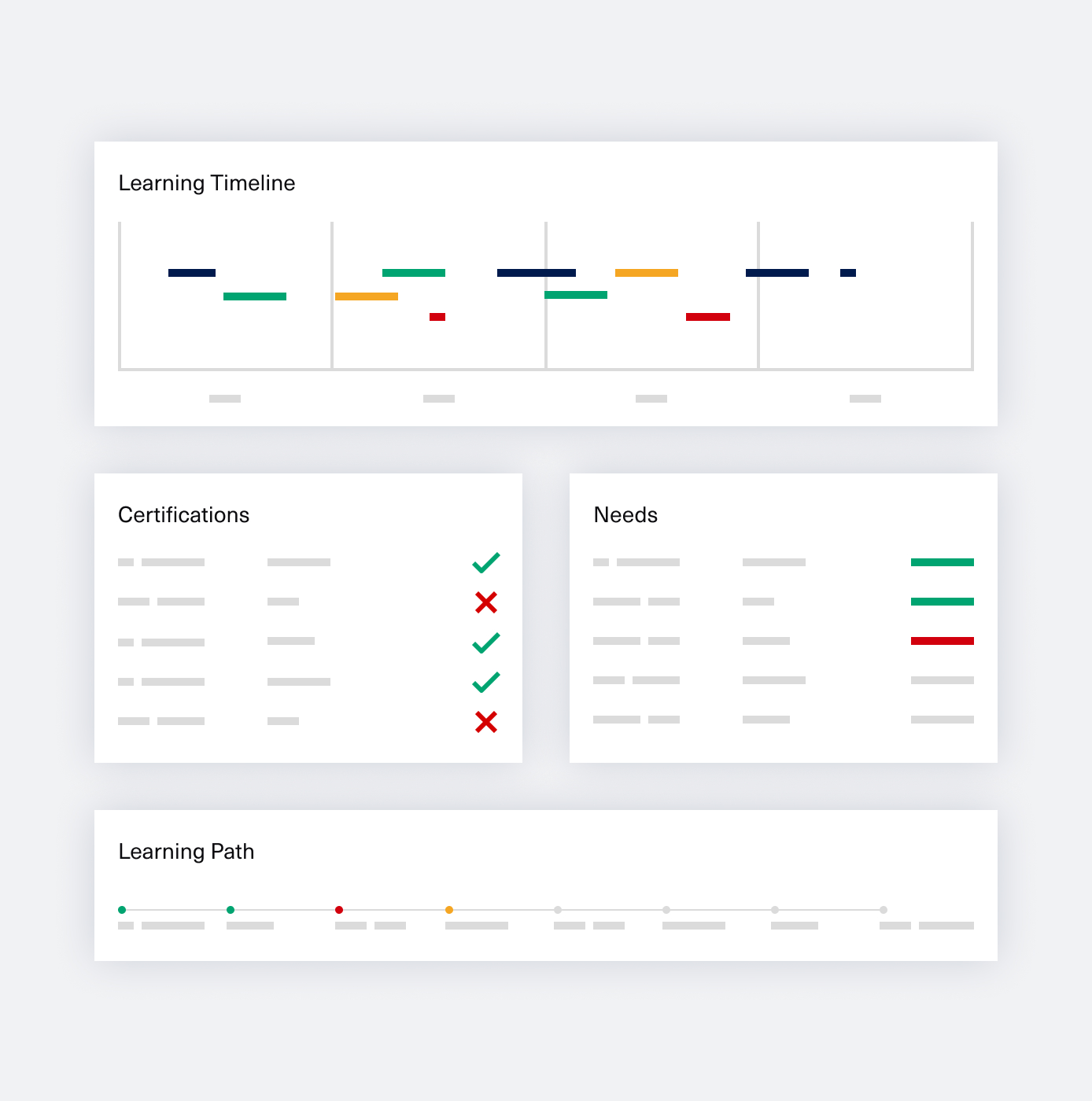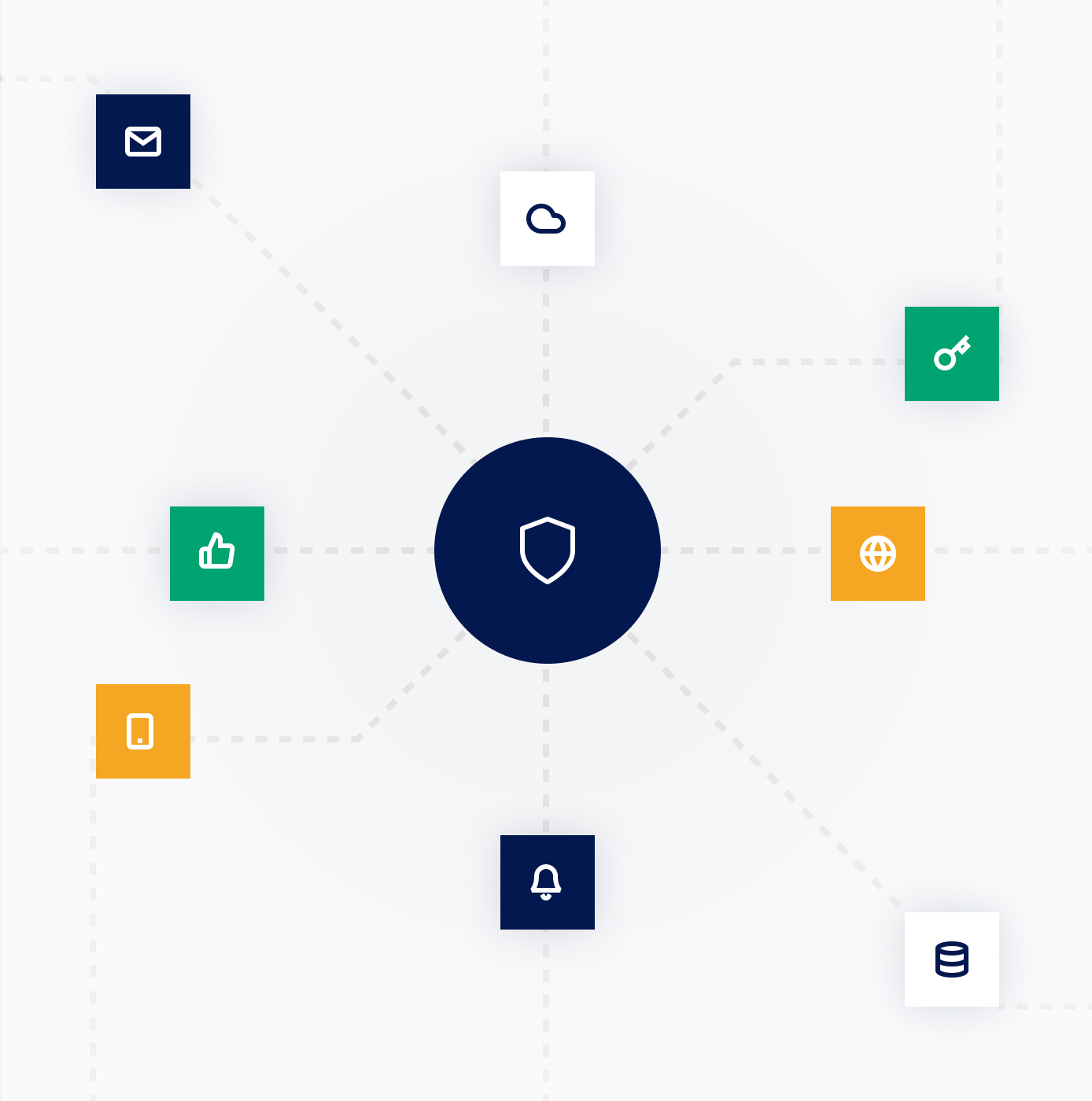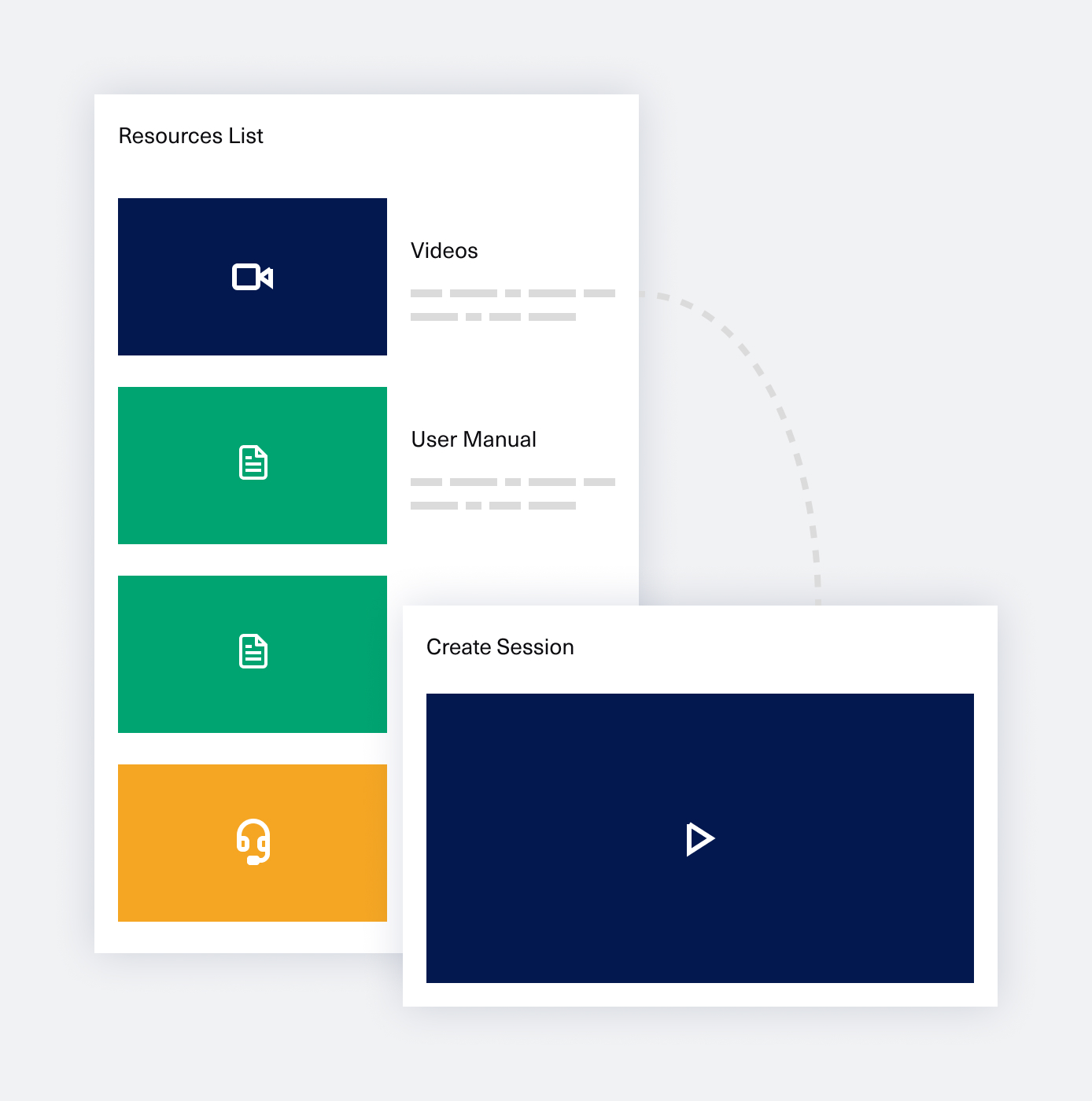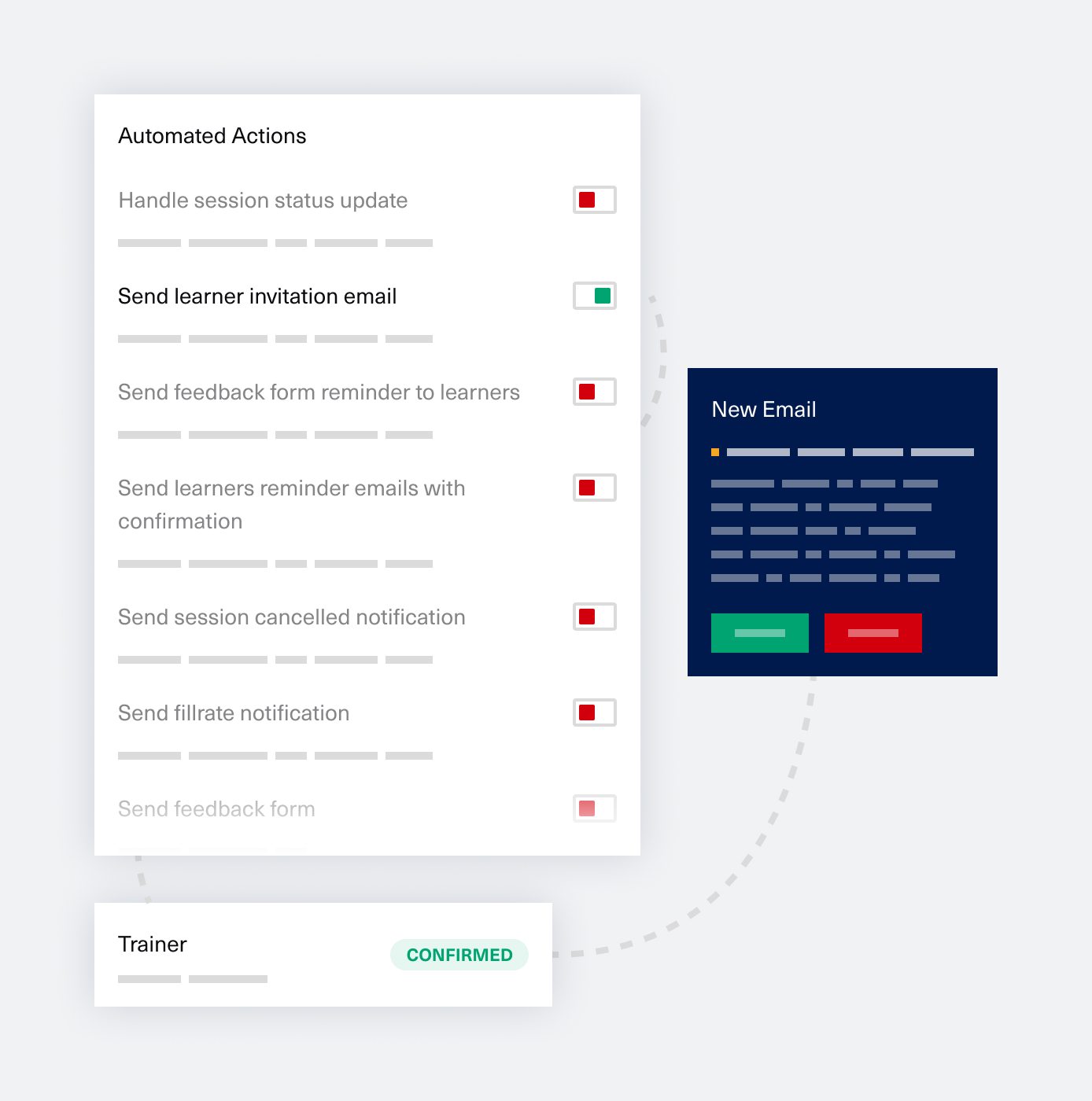Highlights:
* In its HR blog, Spotify talks about being skilled at upskilling and the difference between a reactive and a proactive L&D – as seen in Issue 57 of Offbeat.
* Amazon has a strict one-page rule for writing business cases, which constrains L&D to be both efficient and effective when conveying the purpose of any new initiative.
* Keep a close relationship with the business, constantly do your research, and connect any new L&D initiative with relevant, measurable business metrics.
Outline of an L&D Business Case:
1. Describe the problem
2. Define the target audience
3. Add relevant quantitative & qualitative data
4. Explain the solution to the problem
5. Describe the costs involved (not just cash, but also time and other resources)
6. Show the implementation timeline
7. Add objectives and KPIs that you will track
Transcript:
Liz Stefan 0:05
Hi everyone, you are listening to L&D Spotlight, a podcast about learning and development brought to you by Nifty Learning. I’m your host, Liz Stefan, and together we’re here to learn about L&D.
We have an amazing guest today, Lavinia Mehedintu, she is People Experience Manager at eMAG and the creator and curator of Offbeat.Works. Thank you, Lavinia, for joining us!
Lavinia Mehedintu 0:31
Thank you for having me!
Liz Stefan 0:33
I was thinking today we could do something very practical, maybe even help our listeners to come out with a template out of this conversation. Let’s talk about building a business case for a new learning initiative. I think you might have done this quite frequently in the past, right?
Lavinia Mehedintu 0:50
I have some experience, yeah.
Liz Stefan 0:53
Okay. We know that a lot of the times the business comes to the learning team specifically for learning-related topics, and they have a proposal for a new learning program. In what situations does L&D actually go to the business with suggestions?
Lavinia Mehedintu 1:07
I was recently reading an article from the HR Spotify blog. It’s called being skilled at upskilling, which I really think all of us should at this point. And the author made a really, really good point about being a reactive L&D versus being a proactive L&D, and the case specifically was about upskilling. But I think this reactive versus proactive can come up in any situation, in any stage of an L&D career, you know. And to think about it really specifically, I think there are some situations when L&Ds really can be proactive. One of them might be after a needs assessment. The way you’re building your needs assessment process, which is ultimately a research process, will also determine how reactive or proactive you are. If you’re the one just waiting for people managers, for example, to come to you with the solutions they already thought about, which often happens as L&Ds, well, you are in the shoes of reactive L&D. What you can do is, as I was saying, build the needs assessment process with questions that lead people managers towards the problems, not the solutions. And when you do that, at the end of the process, you can have a brainstorming session with your team and come up with solutions. And that’s one situation where L&Ds can become proactive. Another one is looking at your own work. When you look at your own work and you think about how to optimize different parts of your daily job, I don’t know, a situation is you need a tool, you need an LMS such as Nifty, and you can think about this idea, you can feel that need that you have and go to the business and say: Hey, guys, we need this. The third one does not come from research or being aware of your work but comes out of your constant awareness about where the organization is, where it’s headed, and what the market also says about how the future of work will go, you know. And this comes back to the article I was telling about the beginning that says, okay, you can be reactive and the business comes to you when you’re reactive and tells you okay, “I need to build this skill or this skill or this knowledge and so on”, or you can become proactive and try and forecast what are the future skills that your organization needs, you know? So yeah, these are the three situations I can think of right now when L&Ds can become proactive.
Liz Stefan 4:20
Just on that last point that you made regarding observing trends and suggesting a new set of skills or a specific type of learning, obviously, L&D would need to participate in the company strategy, ideally, when it’s being created. But if they’re not consulted, at least to be aware of the company strategy and to observe which trends in terms of skills or you know, knowledge that needs to be acquired by the business, what kind of knowledge actually aligns with the company’s strategy, right?
Lavinia Mehedintu 4:52
Yeah, that’s right. You have to be aware of where your company is heading. L&D doesn’t necessarily have to be involved in the decision-making process, but keeping in touch with HR Business Partners or your VP of People, and so on, and, of course, with the people managers you’re consulting, will build this knowledge and this, this awareness and the environment, on the one hand. And on the other hand, I really think that, although we’re not in the business, and we read a lot about learning, we should also be in touch with where our industry or maybe competitors are going. And I don’t know, all kinds of articles reading, the Economist, reading McKinsey, Deloitte, to see how the industry will transform over time, and come up with ideas. “Look, guys, so they are going this way. If we’re thinking about this, you should know that we have to build those skills, maybe we don’t have them right now.” and so on.
Liz Stefan 5:55
Yeah. I think this actually touches on two points. One of them is being anchored in the present business-wise, and also having business acumen or understanding your company.
Lavinia Mehedintu 6:06
Exactly.
Liz Stefan 6:07
So that you are able to actually provide relevant advice and to understand what’s happening out there, to the point where you’re able to provide that relevant advice and that suggestion for this particular skill, or for this particular trend, right?
Lavinia Mehedintu 6:21
Exactly.Yep, exactly.
Liz Stefan 6:22
Okay. So let’s go into the practical aspect of this. What does a business case look like? What are the components, let’s say?
Lavinia Mehedintu 6:29
What we’ve done in the past is first to start by describing the problem as much as possible using quantitative and qualitative data, describing your target audience, looking really, really closely at the problem. After looking at the problem, you have to explain your solution. And when you’re explaining your solution, you have to go into, of course, describing it with text, then describing the adjacent costs. And when I say costs, it doesn’t just have to be money, you should look at other resources as well, like the time people spend in your program, that’s also a cost for your initiative. So think about all the costs involved in implementing that initiative. Then write about the timeline, how long will it take to design and implement the solution. And at the end, you have to talk about the objectives and KPIs you’re planning to track, you know, because the one that will read your business case is mostly interested in seeing what’s the added value that your program will bring to the business, to the organization, you know? So I would say use as many data points as possible, if you’ve done an MVP, or if you have a track record of doing something related to what you’re planning to do, just mention it. And honestly, Amazon has this interesting format, they have a one-pager, you know, so you have to write your whole business case in one page, which I have to tell you, from my own experience, that it’s really, really hard. You have to be as concise as possible in explaining both what you’re trying to solve and how you’re trying to solve it. And if you think about it, the CEO, the VPs of your company, have so much time, you know, they have to spend on reading stuff and on exploring new opportunities. So you have to be aware of how much time someone will have to read your business case. So these are my main thoughts on this.
Liz Stefan 8:57
Okay, so you really have to choose your words carefully, especially in this particular area. Essentially, when you say objectives and KPIs, these are the things that will shape the company or the things that will have the strongest impact that will reflect all the way down to improved business metrics and so on, right? So you should be very careful in defining these right?
Lavinia Mehedintu 9:21
That’s really, really important. You have to think about which are your company’s OKRs if you’re working with OKRs. You have to think if your department has some specific targets. Can you link your goals to those targets and objectives? That’s really, really powerful. And that’s something we’re trying to do as much as possible in our team. Usually, honestly speaking, you as an L&D might not be on your CEO’s agenda or a specific project might not be on your CEO’s agenda, but that doesn’t mean it’s not important. And if you’ve seen it’s important, you have to put all the effort into building a business case that will really get the attention of someone above you, you know?
Liz Stefan 10:19
Essentially, as an L&D, you have to be very effective in being your own advocate. If L&D is the one who proposes a new program, who is the end owner of that program’s success?
Lavinia Mehedintu 10:31
That’s a tricky one. You’re asking all the right and really hard questions. Well, I would say it’s a shared responsibility. Let’s say you’re building this career development program. And one of your goals is long-term retention, you know? And that’s an amazing goal and it’s definitely achievable. But if you look at all the studies out there, one of the main reasons people leave their jobs and their companies is not career development, it’s managers. So if I’m building this amazing, amazing career development program, but one or 10 of my participants don’t have, let’s say, the most amazing manager, that’s the main reason they’re going to leave. So my goal won’t be reached, but not because I haven’t done everything possible to keep those people, but because of other factors, I can or I can’t control.
Liz Stefan 11:41
I feel like all of our conversations ultimately end up being about culture. So I guess it’s fair to say that culture does play a very important role in a company’s acquisition of knowledge, regardless of the owner or promoter of learning initiative, right?
Lavinia Mehedintu 11:55
I think that culture facilitates L&Ds reaching their goals, you know, and ourselves. I think our programs impact each other in an unrelated way somehow, you know? Because if I come back to my previous example if I don’t have a strong leadership program that makes sure that my managers are equipped with all the tools and knowledge and skills they need to be amazing managers, other initiatives of mine won’t reach their goals. That’s one example. culture, definitely, how much time and how much attention people give to learning, informal or formal learning, is definitely also a huge factor in L&Ds reaching their goals.
Liz Stefan 12:46
Very well said, it’s almost like learning programs work in layers that support each other. So you have to have a very good foundation related to culture, things like leadership, things like how do we work, how do we provide feedback, how do we express dissatisfaction and still feel safe in the workplace. If I’m not mistaken, you touch on this in Offbeat quite a lot of times, related to psychological safety at work, and the way it fosters learning, or lack thereof, preventing learning, but also preventing good retention, preventing reaching business goals and so on.
Lavinia Mehedintu 13:23
Yeah.
Liz Stefan 13:24
And the Spotify example that you also provided in the beginning, I believe that’s from two issues ago, right?
Lavinia Mehedintu 13:28
Yeah, I usually give examples that I read and share through Offbeat.
Liz Stefan 13:33
So I really strongly encourage our listeners to check out Offbeat.Works and have a read through both the digital magazine and all the issues but also subscribe to the newsletter, because you will find a lot of similarly actionable resources there, specifically for L&D people. Now I want to maybe put you a bit in a difficult spot. And let’s try to do that Amazon one-pager or for a business case. Now that we’ve talked about the theory. let’s also try an impromptu exercise. Let’s take an example and try to help our audience get started with building a business case. Assuming that a retail company has had to move a lot of its business online, therefore, they need to launch a learning initiative to help people be more comfortable with online selling. Let’s start with describing the problem.
Lavinia Mehedintu 14:23
We are trying to keep this revenue line long term, most likely, but we don’t have the skills to do digital marketing, let’s say.
Liz Stefan 14:34
Okay, so who’s our target audience, in this case?
Lavinia Mehedintu 14:37
Our target audience might be a new sales team or a new e-commerce team that we want to re-skill or we will recruit in the future.
Liz Stefan 14:46
What kind of quantitative and qualitative data should we include?
Lavinia Mehedintu 14:50
I think we can include numbers from this new revenue stream of ours. We started, let’s say, in May 2020 to sell online, and we’ve seen some results, you know, which are those results, we can show them.
Liz Stefan 15:05
I assume this kind of information you would still get by consulting with the business. So even while you’re building the business case, you’re still doing that research and speaking to all the departments to validate that these are the right assumptions, right?
Lavinia Mehedintu 15:19
Right.
Liz Stefan 15:20
So we get this quantitative, qualitative data from the sales department, let’s say. Now let’s explain the solution to the problem.
Lavinia Mehedintu 15:27
I would explain it by making a list of all the learning paths, let’s say I would explore, based on research I’ve done regarding what other companies are learning.
Liz Stefan 15:42
People could even use Offbeat to find some examples, right?
Lavinia Mehedintu 15:44
Yeah, yeah.
Liz Stefan 15:45
Okay. Let’s think about the costs involved.
Lavinia Mehedintu 15:49
Well, you have to look at the cost of, let’s say, training, maybe. And when I say training, I mean, all kinds of learning initiatives. I don’t usually use the word but I think it’s really relatable to our audience. So if you think about e-learning, if you think about mentors, if you think about in-class sessions or online sessions, and so on, those learning paths will give you the kind of resources you’re going to use. So you have to think about what’s the cost of each of those resources, and maybe even think about the cost that, you know – for sales is always easy, because you know, how much salespeople will do in one hour in one day, and so on. So if you have those numbers, if you know how much time they will spend learning or being involved in your initiative, and how much they would do in that particular time, that’s a cost and you can include that as well.
Liz Stefan 16:45
Essentially perform an opportunity cost analysis, right?
Lavinia Mehedintu 16:48
Yeah, exactly.
Liz Stefan 16:49
So a note here to keep in mind. When we say costs in L&D, we’re not just thinking about direct cash, right? Time is also a cost, the time not spent doing your job is also a cost, and so on.
Lavinia Mehedintu 17:00
Just one thought here. If your sales participant – let’s say that it’s sales – if your sales participant will spend some time in your learning program, that might mean that you have to recruit other sales reps. So you really have to know how much of their time will be spent on the program. And if that time means that you have to recruit someone else, that’s an added cost of the initiative.
Liz Stefan 17:30
Okay, so essentially, if the business can afford to take people out of selling in order to attend training, and in case you need to backfill for that. That’s very insightful. Okay, the implementation timeline, obviously, this is a schedule of sorts?
Lavinia Mehedintu 17:45
Exactly, so how much time will it take to design the program? How much time will it take to implement phase one, phase two, and so on? It’s a timeline.
Liz Stefan 17:54
I have a question. Maybe here, or in the fourth point, explaining the solution, I feel the need to also mention somewhere the stakeholders who you would expect to be involved in this initiative. As a promoter or a sponsor?
Lavinia Mehedintu 18:07
It depends a lot on who is reading the business case because you have to think if they will be interested in that or not. If you get back to the one-pager, you have to keep the information as concise as possible. So you definitely have to keep it in mind for yourself, but I wouldn’t add it to the business case if I wouldn’t know the person reading it would be interested.
Liz Stefan 18:31
Okay, that makes sense. So sticking to the most relevant data, and maybe at a later point in time to include also…
Lavinia Mehedintu 18:38
Yeah, maybe do an FAQ of some sort. If your business case is as good as to be read by someone, they will also have follow-up questions, and you can prepare follow-up questions for them.
Liz Stefan 18:52
So we’ve gone through describing the problem, defining the target audience, adding in the right kind of data to support our business case, explaining the solution, describing the costs and the resources involved. We’ve shown also an implementation timeline. So far, so good, the reader is really engaged. Right now what you want to do is end on a very, very strong and persuasive note, right? Objectives and KPIs that you plan to track.
Lavinia Mehedintu 19:17
Yeah, I would honestly link it to the business objectives and KPIs and talk about revenue and try and forecast, maybe read a little bit of research to see if others have done this kind of program and have seen some kind of result and try and forecast growth in revenue or optimization to deliver a project. I don’t know, the website implementation or something like that. Yeah. So I would add at least one goal, and at most three goals, maybe for the initiative and two KPIs for each goal, something like that.
Liz Stefan 20:00
Okay, that’s very specific and it’s very actionable, I really love this. Thank you for indulging me with this exercise. I particularly love these types of conversations where we can get very practical and into the details of how something is done. Thank you once again. As always, your practical experience is really very apparent. I love that we’re able to go into such specific detail with these topics that we address. Really looking forward to our next conversation.
Lavinia Mehedintu 20:25
Awesome, can’t wait!
Liz Stefan 20:31
Thank you so much for being with us today. This has been another episode of L&D Spotlight. If you’d like to get in touch and join the conversation, write to me at Liz[at]niftylearning.io or connect with me on LinkedIn at Liz Stefan. Have a productive week, everyone!













